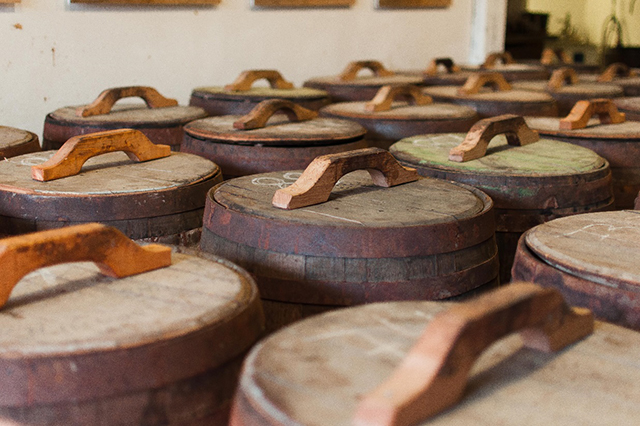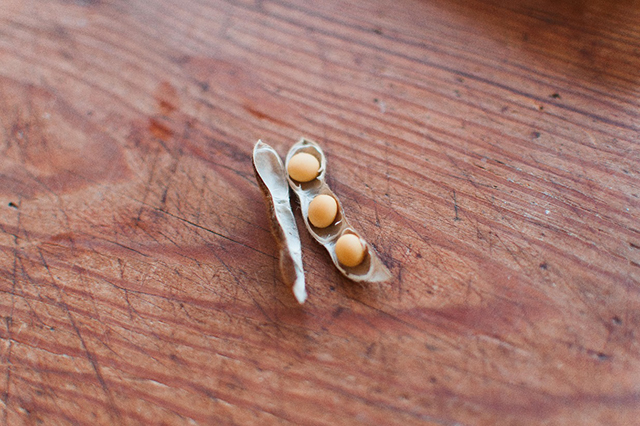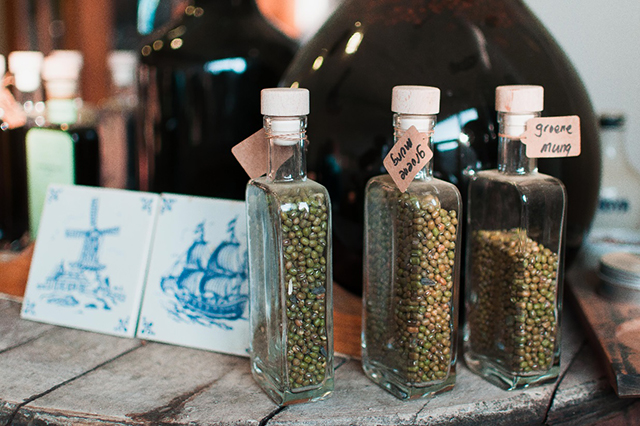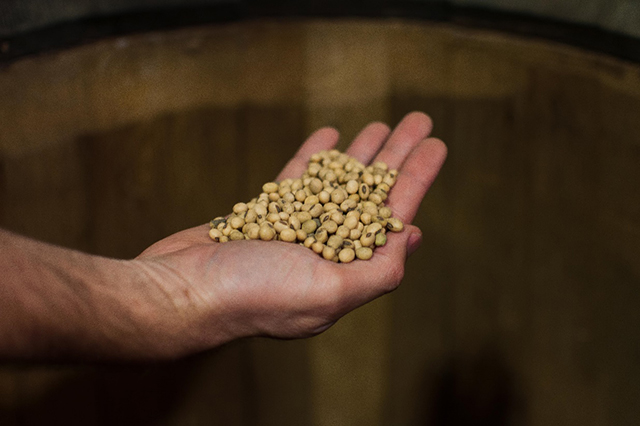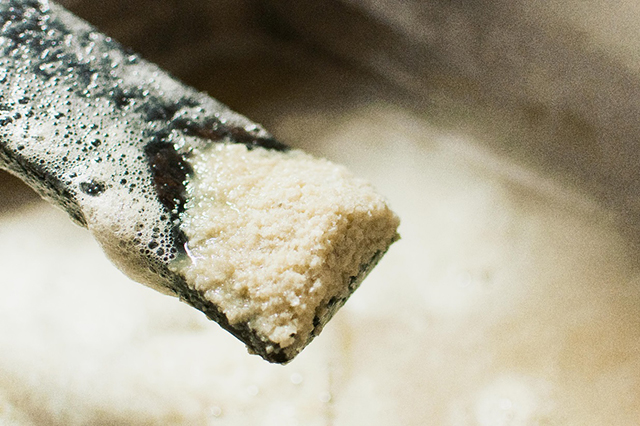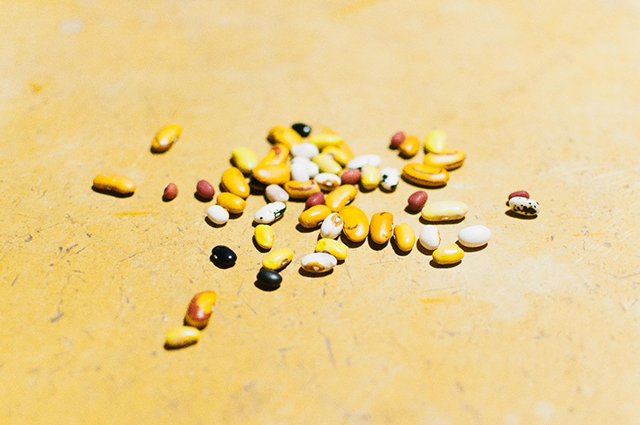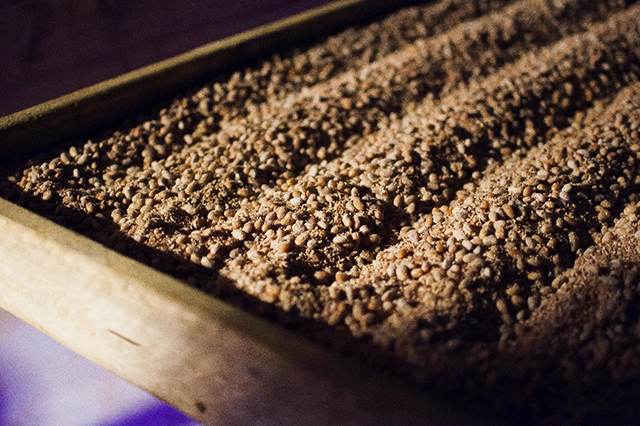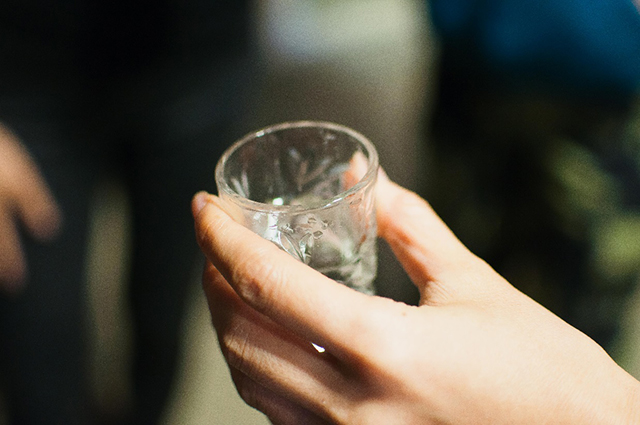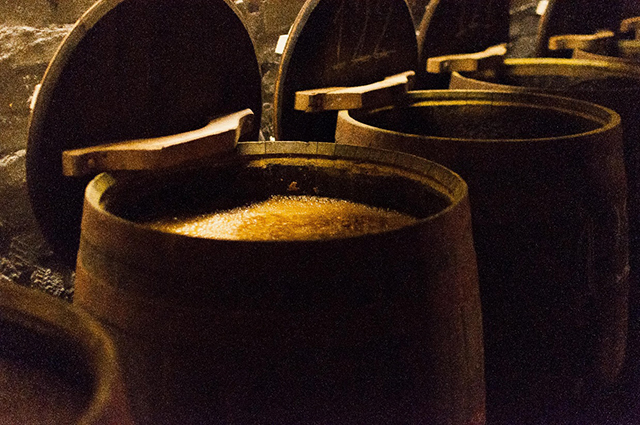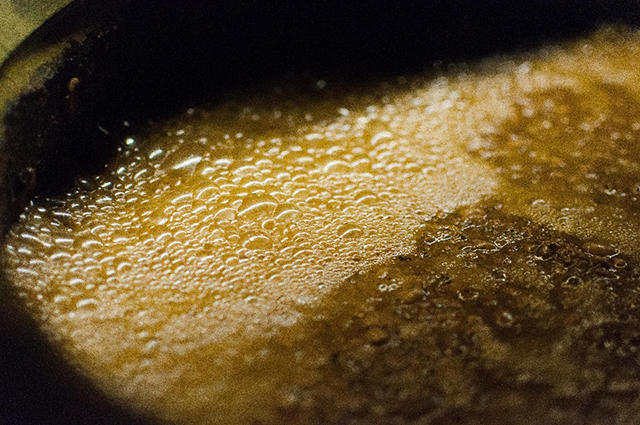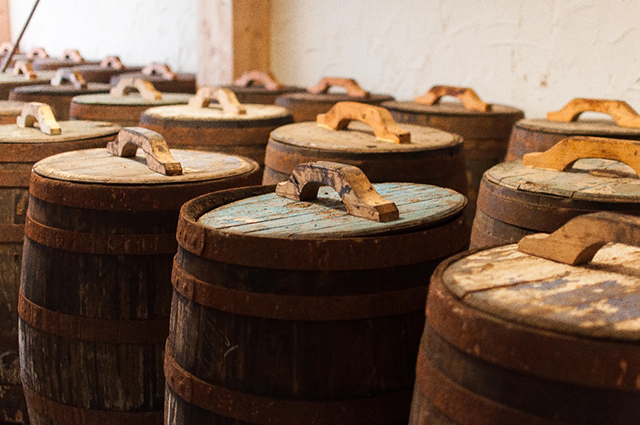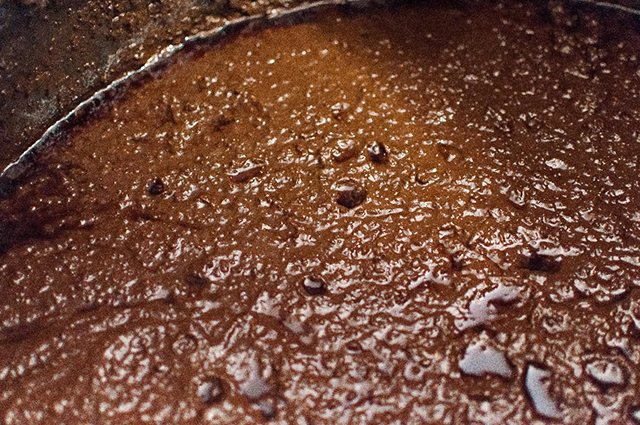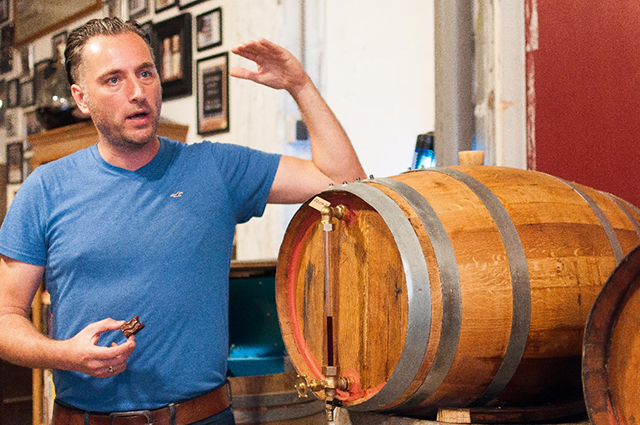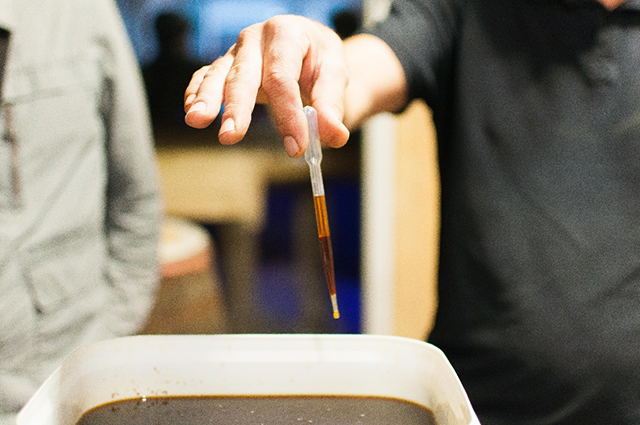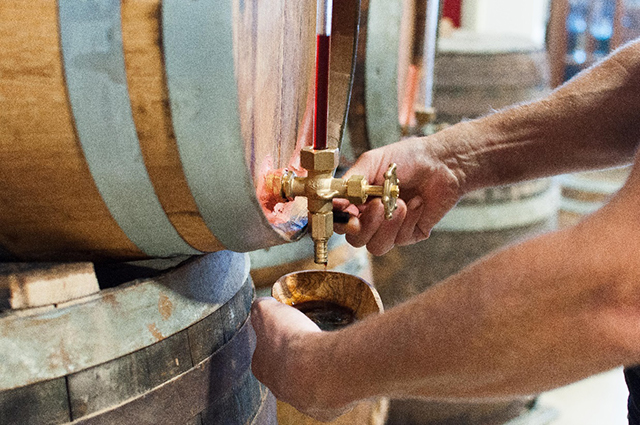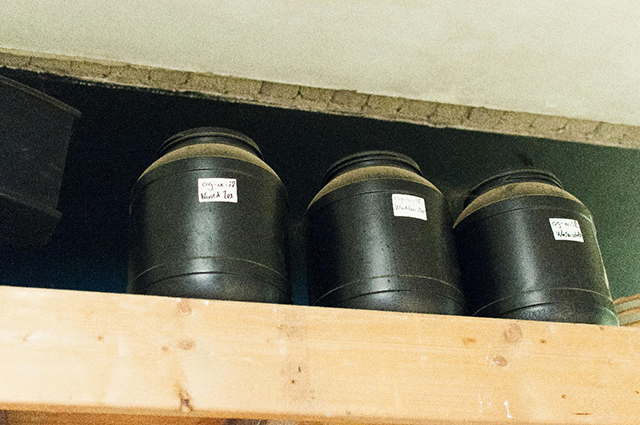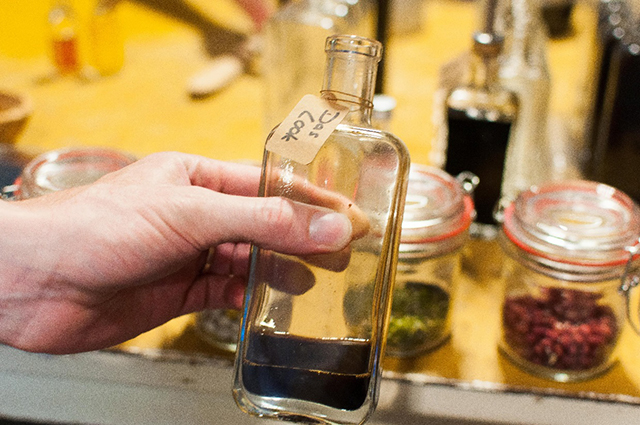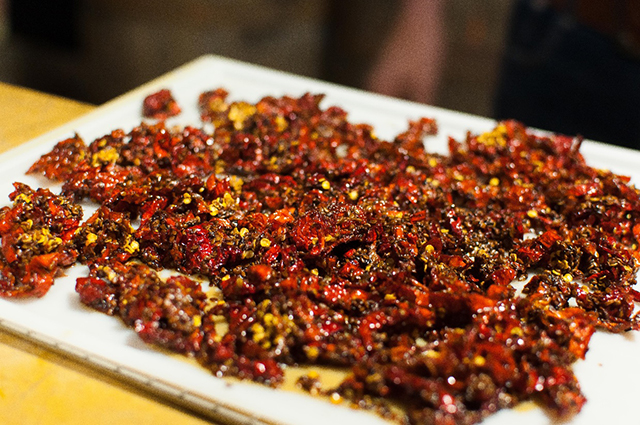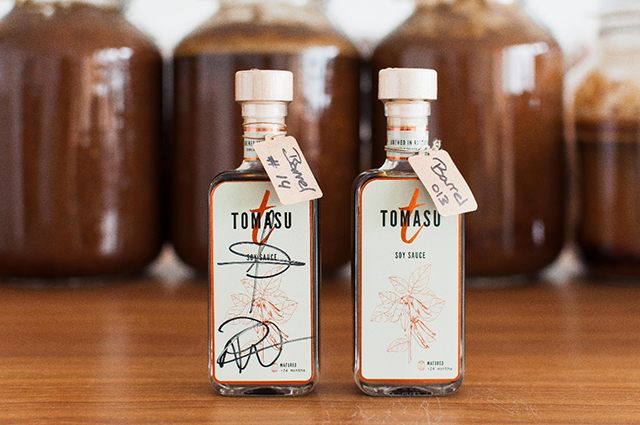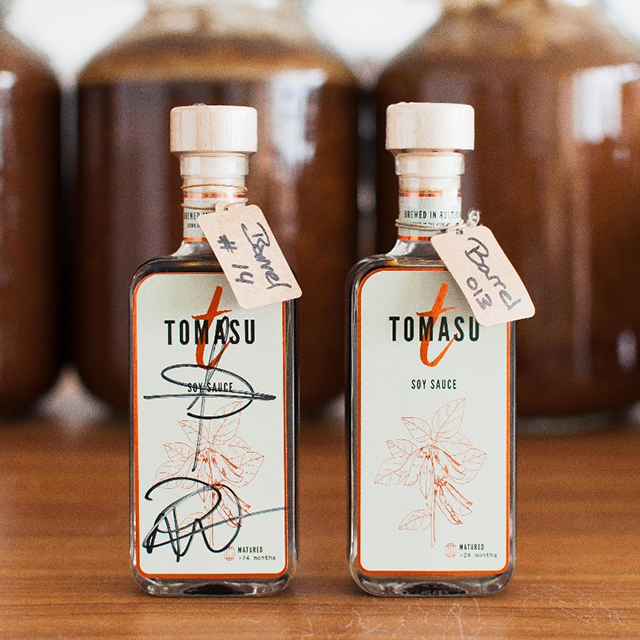
Tomasu Soy Sauce. The only micro Shoyu brewery in Europe.
In early October, we had an unforgettable visit at Tomasu Soy Sauce, the only micro Shoyu brewery in Europe.
When I heard about them, I slapped my knee in jubilation. There are people in the south whom I can share my obsession with Shoyu! As one of the enthusiastic Shoyu brewer, I was curious how they came down to Shoyu making in the Netherlands. After sending my love letter to them, Tomasu team welcomed us at their brewhouse with great enthusiasm.
Initially, we planned to start a tour from their farm in Hoeksche Waard but due to the early harvest (caused by the heatwave this year), we decided to save that for later. It was a good decision anyway as we had way more things to talk about in their brew house.
✔日本語記事(Japanese article)
Tomasu Soy Sauce. 欧州で唯一の醤油マイクロブリューワリー
Whisky barrels in their brew house
When we arrived at their address, we found ourselves at the corner of the factory building. Soon we noticed that one of the building had light protection glass windows where we could peep through barrels lined up behind it. Piet van Westen opened the door and welcomed us in.
The first thing that caught our eyes was, of course, the beautiful whisky barrels. Piet explained that every Shoyu they make is brewed in a single cask. What does it mean? Every cask has a different aroma because they use 25- to 50-year-old whisky barrels specially sourced from Scotland’s finest distilleries. They respect the different characters and never blend the brew from different barrels. One barrel can produce 500 bottles of 200ml Shoyu, and when it runs out, it’s op!
The beautiful whisky barrels.
“It all starts in the soil.”
Thomas Uljee, the founder of Tomasu Soy Sauce explained how this whole thing started.
“We started with the ground about 6 years ago. Our philosophy is that it all starts in the soil.”, he said.
He strongly believes that the nutritious value is the taste. “The more you put in the ingredients, the more nutritious value, and the more taste you get from it.”
Where the soybeans come from: 5200>34>3>1
I asked where they originally sourced their beans to start with.
They first had contact with the University of Wageningen where they mutually made an selection out of the 5200 kinds of non-GMO soybeans. Through the field research, 34 out of them were selected and cultivated in Lelystad, the dependency of the University of Wageningen. There they grew those beans in a very small scale like 4sqr meter to make the best selection. After a year, three out of them were eventually selected. Tomasu team took those three kinds of beans home and tried growing in their farm in Hoeksche Waard.
In the end, one type of beans was selected, which they now use it in a row for three years successively.
They work with Centre for Genetic Resources, the Netherlands – WUR, which gives them opportunities to work with very special beans and wheat from over hundreds of years ago. Reason for doing so is that they are mostly interested in new flavors as they approach their product like wine. For them, the flavor starts with the ingredients and the soil it grows in. Hence the reason why they are proud and grateful to work with people at the centre for genetic resources.
non-GMO soybeans.
Search for flavour = healthy soil
Thomas said that there is one more guy, Jeroen who is a farmer and looks after their beans and a lot of research that starts in the soil. The team consists of Thomas, Piet, Jeroen Klompe and Bert Mulder, who is in charge of communication and the Tomasu brand.
“What drives us is only exceptional taste. Search for flavour. For that, we need healthy soil, and that’s the job of the farmer. The focus ever since the 2nd World War has been on maximizing crop yield (also known as “agricultural output”). Obviously, this has proven itself to be very successful when it comes to efficiency. However, that’s not what we are interested in. We don’t care how much we can produce. What we care about, is whether we can produce the best beans that produce great nutritional value, which results in great taste. It has to be premium. That’s where we put our effort in when it comes to growing our wheat and beans. We developed a holistic approach that will help us in our relentless search for flavor. And the good part is that we believe that we just started this journey and will continue to do so for decades to come.”
“Umami” and “Takumi”
Since Thomas Uljee is a baker, he naturally loves bread. He thinks that it’s the nicest occupation because he can care from the original ingredient wheat to the final product bread. He is dedicated to delivering quality bread to the Dutch market, but the majority of consumer needs convenience rather than quality, which makes it difficult for Thomas (or any other local bakers) to compete against the large retailers.
Thomas wondered how his company can survive 50 years later in this world. The only thing he could think of was taste. If one has an exceptional, incomparable unique flavour and taste, people would look for him.
In his study at the University of Wageningen, he learnt a lot about taste: salty, sweet, sour and bitter – but there was one thing missing: Umami. That’s what triggered Thomas.
There is one more thing that attracts him: craftsmanship, or in Japanese – “Takumi”.
In the Netherlands, Thomas thinks that people get the title “craftsmanship” too easily. In Japan, you are able to call yourself Takumi if you do things for 40 years or more. Thomas is fascinated with that high standard and wants to be Takumi himself in the end.
“I want to be able to explain why my product tastes like that in 20 years. I can only do that if I know which barrel it was, how Koji was made, which ingredients we used, which part of the soil in our land it came from. So if you visit me in 20 or 30 years, I will still be doing the same thing, but only I hope that I can explain you more how this flavour was created. To learn that, you have to have everything yourselves.”
Tomasu Soy Sauce during fermentation.
Thomas and Shoyu. A new team in three continents.
5 years ago, Thomas saw on the television Matt Jamie making soy sauce in bourbon barrels. One and half day later, Thomas was knocking his door in Louisville, Kentucky. “I saw you on TV. I want to do that in Europe.”
After getting inspired by Matt, Thomas came back to the Netherlands and started experimenting on making Shoyu with Piet. “We were cooking in a small pan over there. It was hardly anything.”
Now they taught themselves Shoyu making and made up a team with Matt and Toshio Shinko, the president of the Yuasa Soy Sauce Company. It is their dream to join forces and to bring Shoyu to a higher level and give it the global platform it deserves.
First thing first: Beans
Tomasu team experiments with many beans they produce. Only they are not called Shoyu, but fermented beans sauce.
Thomas respects the Japanese culture of using soybeans in Shoyu, and strictly calls the other production “fermented sauce”.
Tomasu team experiments with many beans they produce.
They also experiment with 130 different kinds of wheat. For the beans, they work with a gene bank so they can use the beans from 1100 years ago.
Beans from 2017.
Soybeans need to sit for 2 to 3 months for drying before they are used for Shoyu making.
Dried soybeans.
Every Monday, they rinse the soybeans and start soaking it for the next 24 hours. On Tuesday they boil the beans for about 2 hours in Au Bain-Marie. Every time the boiling is different, as one must feel it how the beans are done by himself, rather than relying on numbers.
Toshio Shinko taught Thomas not to throw away the water from cooking beans. The broth contains a lot of protein and can be used for Shoyu making. They add salt to preserve it while making Koji. The salt is from Guerande in France. They visited the salt farmers themselves and asked if they could use their salt in their Shoyu.
“What’s special about Guerande salt is that the clay they make this salt is too thick for sodium and natrium. So with this we can make Shoyu with a very low content of sodium. All the Shoyu has sodium content of 18-20%, but ours has 13%. Also, the salt is made in a natural way, so it contains a lot of algae, which we want in our Shoyu as well because algae is a source of Umami.”
Broth after cooking soybeans.
Other beans Tomasu is experimenting.
Roasting and pulverizing wheat
The next ingredient is wheat. They are roasted and coarsely pulverized. Wheat is roasted in the oven at 200ºC for about 15 minutes (every 5 minutes they are flipped upside down). Again, this depends a lot on the condition of wheat itself and the roasting time is different every time.
Roasted wheat.
Bringing soybeans and wheat into Koji room
Steamed soybeans and roasted wheat are carried into their incubation room, aka Koji room.
In the beginning, they spread the wheat on the soybeans while cooling them down. This is to ensure that enough moisture is kept inside. Then they will mix the beans and wheat, and inoculate Aspergillus oryzae, the spore/starter. In the next 24 hours, the mixture is completely covered by white mould, and that will change to green in the next 24h, then finally everything is completely green in final 24 hours.
Koji to be in their incubation room.
The thick layer of the mixture and the table layout in this room also changes depending on the temperature of Koji, which should be ideally between 30 and 35ºC. The room temperature is kept no higher than 22 to 25ºC. Thomas kindly gave a lot of numbers to my questions but again, I must emphasize that the work of Takumi is not fixed numbers, but it is what can be achieved from years of experience. Tomasu team respects that, and try to gain that craftsmanship themselves.
Sample of Koji
Thomas showed us the previously made Koji as a sample.
A lot of spores coming from Koji.
No pasteurization on all Shoyu
Thomas explained that no Shoyu they make is pasteurized. For now, he believes that the pasteurization has a negative effect on the excellent flavour, and further maturing in the bottles only makes the taste better. The team even asked notable chefs to taste the condensed version of their Shoyu and they were blown away with its flavour. They will see if this would be the best and only way and if not, they might change in the future. The time can only tell.
Ageing in whisky barrels
The Koji will be put in a brine as soon as it’s ready. Tomasu uses barrels sourced from Scotland’s finest distilleries, yet is still looking to select a long term partnership with a dedicated distiller. In the coming years they hope to find a partner that fits their philosophy.
Before the Koji goes into the barrels, they put 8-10 litre of water in these barrels so that the wood will expand and become water-tight.
The water in the barrel will have an alcohol level of 20%. Thomas let us taste the water from the barrel, and we could understand how much impact the flavour from barrel has to the Shoyu making. He got this idea from Matt Jaimie who lives in the heart of bourbon, Kentucky. Instead of bourbon, Tomasu team uses whisky barrels.
Another special thing is that Tomasu uses only the barrels that has charcoal level No. 4.
In whisky making, every barrel is burned inside and there are 4 levels. The level 1 is very lightly toasted and the level 4 is heavily toasted. This will give colour to Shoyu and taste from tannin in the wood, and most of all – it balances the moisture between inside and outside the barrels.
Tasting the water in the barrel.
Tomasu team created a special vacuum machine to transfer Koji into whisky barrels. They also use this for the brine and add extra water and salt to complete the best balance with the amount of Koji.
The water they use for Shoyu making is filtered with a coconut carbon and filtered to keep only two elements: magnesium and calcium.
Barrels are moved to a Moromi room
Once all Koji, brine and extra water and salt are mixed in the barrels, you can call it Moromi. The barrels are then moved to a room called “Moromi room”, or a baby room as they’d like to call it. In the first 6 or 7 weeks, the barrels with Moromi are kept in this room. This is where fermentation of Moromi starts. The room is kept warm at 30ºC.
Barrels with Moromi from last week in Moromi chamber.
Every day they stir the Moromi.
6 weeks old Moromi.
After 7 weeks, into the ageing room
After 7 weeks in Moromi room, barrels are then moved to the ageing room. From then on, they mix Moromi once a week. In hot summer days, maybe twice.
Barrels in the ageing room.
Moromi still in fermentation.
After 2-3 years, the fermentation is nearly done, which is a sign for bottling.
Bottling barrels
Moromi that’s ready for bottling is then pressed in a French oak barrel, which takes one and a half week per barrel. On this day, they were pressing the barrel 14, a 2 years old Shoyu from 2018. This barrel will stay here for a month even after pressing and filtering the Moromi in order to separate out the oil and sediment. Soybeans from the Netherlands has a high percentage in oil, which you wouldn’t want in Shoyu. They only extract the heart of the barrel.
The French oak barrel to take out only the heart of Shoyu.
The separation of oil.
This oil was a waste product until they met chefs who found this highly potential in their restaurant. However, each barrel “produces” only 1% of oil to the entire Moromi which makes it extremely precious.
Left: oil extracted from Shoyu. Right: standard soybean oil.
Piet let us taste the fresh Shoyu from the tap. (Where else can you experience this in Europe!?)
The fresh Shoyu from the tap.
Obsession in further research in water
Tomasu’s journey never ends. Here are some examples…
Some sea water from Noord Zee, Wadden Zee and other sea.
They have been testing some sea water from Noord Zee, Wadden Zee and other sea to see how the water vaporizes and the sodium content.
Another experiment is to infuse the Shoyu with herbs and spices.
Ramsons Shoyu.
Meeting people, more insight, continuous journey
“When we finally made soy sauce, we thought we did it, but we met chefs and other people who gave us a lot of insight. So we start again. We will try, and if we failed, we will learn from that. Maybe something great comes out. Either way, it will enrich your life. That’s the journey we are making.”, said Thomas.
Whisky and Shoyu
“I have always been fond of whisky. Good whisky is made in a single cask. If you sip bad whisky, your mouth is on fire. If you sip good whisky, you don’t feel it – until you breathe. Then you feel it almost coming from your ears. It’s very mild. Another thing to make difference is time. The short brew will bite you. What we are looking for is not a bite, but a flavour.”
New product: sweet soy sauce
Tomasu has just released a new product, sweet soy sauce. “You got two kinds of people who adore Shoyu. One that adores the salty one and the others love sweet one. So we want to give them a choice. I think that one of the most beautiful battles is sweet and salt. It’s the taste that people can’t resist. When you are born, you get mother milk which contains a lot of fat and salt. The fat is very rich in sugar. You need salt too so you won’t dry out. That’s why people are always attracted to the battle between sweet and salty.”
Tomasu does not have a recipe for this sweet soy sauce. They add sugar extracted from locally harvested sugar beets to Shoyu and let it decide by itself how much sugar Shoyu wants to dissolve. They leave it for 2 months and extract the clear upper portion.
“If you take time, nature gives you a solution. If you keep the pressure on money and time, there is always going to be something artificial.”
Honey from their own soy farm
On the table, we saw a jar of 2 years old honey. The amazing thing is that this honey is also collected from their soybean plants. On top of that, they had an experimental mix of Shoyu and this honey, coming from the same plants. How much more can you ask for?
What to do with pulp from Shoyu?
Tomasu uses the pulp after pressing Shoyu Moromi for fertilizing soil, experimenting and making new spices.
New spice blend from Shoyu lees and chilli left over from making sweet soy sauce.
Tomasu’s dreams
Thomas told us their three dreams.
First one is to make his own Shoyu château like Bordeaux wine. They do not want to become big but be great. They want to talk about their Shoyu like wine, the type of soybeans, wheat, salt, soil and year etc.
Secondly, Tomasu teamed up with Matt Jaimie and Toshio Shinko and bring Shoyu to a higher level. For example, if you pair wine and fish dish, they want to pair matching Shoyu to it as well. “No swimming in Shoyu.”
Last but not least, they want to collaborate with people from all over the world. Whether they are journalists, scientists, chefs, amateurs, farmers. They believe that this is the shortest route to become better in what they do.
I asked him if he has visited Japan already. The answer was zero.
“I am a traveller. I’ve travelled to the world – except for Japan. Japan is high on my list, but I have not been there yet. It is because I want to reinvent my skills and think on my own. The most dangerous thing for your creatively is a tradition. However, we have now built up our way and the basics. We also met Toshio Shinko, so we are going soon.”
Tomasu Soy Sauce.
“If you think about it, we are just babies. In Japan, this is a tradition of 1500 years. That’s like about 30 generations. We just started here. It’s crazy, isn’t it?”
Links
✔日本語記事(Japanese article)
Tomasu Soy Sauce. 欧州で唯一の醤油マイクロブリューワリー

